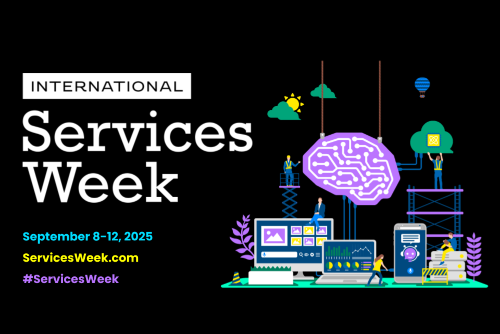How AI is helping professional services organizations become profit centers

You’ve seen it, right? In recent years, there’s been a significant shift in organizations toward transforming their professional services and Customer Success (CS) teams into profit centers. This trend, driven by the need for efficiency and predictability, is reshaping how companies perceive and utilize these departments. Let’s explore this evolving landscape and some key trends that are shaping our industry…
The shift to profit centers
Historically, many professional services organizations, especially those embedded within larger companies, were not viewed as profit centers. Often operating at break-even or even as cost centers, their primary goal was to drive customer satisfaction and loyalty.
But the landscape began to change a couple years ago, when interest rates began to rise after two decades of stability. That prompted organizations to re-evaluate their service teams, aiming to enhance profitability and efficiency.
The numbers bear that out. A recent survey of approximately 1,000 professional services organizations—including both embedded teams and independent consultancies—revealed a striking transformation: Less than 10% of embedded service teams now consider themselves cost centers, while over 2/3 actually view themselves as profit centers. This fundamental shift underscores a growing emphasis on leveraging technology and strategic planning to enhance efficiency and drive profitability.
Using an AI maturity model
As organizations strive to make their services teams profitable, a critical tool has emerged: artificial intelligence (AI). Organizations are assessing and enhancing their AI capabilities by employing an “AI maturity model.” This tool employs a structured approach for evolving one’s data management and AI deployment strategies.
In the model’s initial stage, organizations rely on disparate tools and unstructured data. The focus is on adopting generative AI technologies—including large language models (LLMs) like Chat GPT—that don’t require extensive internal data. These enhance efficiency without the need for detailed business-specific information.
In the AI maturity model’s more advanced stages, organizations operate with a cohesive data strategy, integrating all operational data into a unified platform. Within this robust data infrastructure, predictive AI technologies can be deployed, offering sophisticated insights and actionable recommendations. For instance, predictive AI can analyze project schedules, identify potential risks, and suggest interventions to ensure timely delivery.
Embracing AI for services efficiency
As professional services organizations getting more focused on pragmatic AI deployment to enhance their operations, three core principles have emerged to ensure successful implementation of this AI maturity model:
- Deployability. AI solutions must be integrated across the organization, not confined to isolated use cases, so they can have a broad impact on operations.
- Actionability. AI should surface actionable insights that drive decision-making and tangible business impact.
- Closed-loop systems. Organizations must ensure their data infrastructure supports continuous improvement through feedback loops, where AI-generated insights refine and enhance future models.
Trust and security in AI
Of course, adopting any AI technology raises questions about trust and data security. This involves focusing on two critical areas. One is ensuring the accuracy of AI-generated insights, by choosing AI use cases with high accuracy potential and continuously validating the results to maintain trust.
The second area of focus is data security— safeguarding data from unauthorized access or misuse. This requires understanding where data is stored and processed, and ensuring that third-party processors adhere to stringent security standards. For instance, platforms like Salesforce provide a trusted environment for AI deployment, ensuring data remains within secure boundaries.
The shift toward making professional services and Customer Success teams profit centers is reshaping the industry. By leveraging AI strategically, organizations can enhance efficiency, drive profitability, and maintain high levels of customer satisfaction.
Recent Articles
Maximize your Salesforce investment with Certinia






